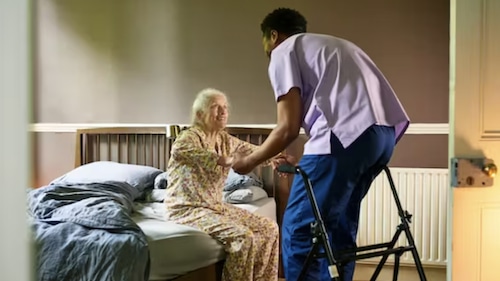More than a month ago, Governor Kathy Hochul declared that the state had selected Public Partnerships, based in Georgia, to oversee its Consumer Directed Personal Assistance Program (CDPAP). The program offers vital home care services to approximately 250,000 Medicaid-eligible residents of New York, and dozens of facilitators have recently been selected to join the redesigned network.
Consumers, providers, and disability rights advocates have expressed concerns about depending on a single statewide fiscal intermediary since the state decided to combine CDPAP management under Public Partnerships. They believe this could result in job losses for local providers and disrupt vital services for CDPAP clients.
According to Elite Choice, a business that only provides self-directed home health care to clients who use CDPAP, implementing the new idea could be difficult without affecting services given the program’s scale and ongoing expansion.
However, Hochul stated that the effort is intended to guarantee timely caregiver payments and continuous services, and that CDPAP eligibility for home care recipients will not alter, requiring current users to reapply.
New York is now making improvements to home health care, which will be fully implemented by April 1. The state has responded to some of the most important questions:
What function will Georgia-based Public Partnerships play as the CDPAP’s new principal partner in New York? What is involved?
Public Partnerships will operate the contract from New York and move its headquarters to the state, acting as CDPAP’s statewide fiscal middleman. Public Partnership will specifically:
- Help individuals register for the program
- Provide training and education to consumers
- Collaborate with state and health plan case managers to support consumers
- Work as a joint employer with consumers to support caregivers (personal assistants)
- Issue payroll to personal assistants
- Ensure compliance with Medicaid and program requirements
- Identify and address fraud, waste, and abuse in collaboration with the state
- Handle taxes and required reporting
Additional partners for the statewide CDPAP partnership in New York have received conditional approval from the state’s health department. How does their job differ from that of public partnerships?
The network’s 24 new organizations are referred to as CDPAP facilitators. In addition to providing consumers with customer service, education, and training, they will assist consumers and personal assistants with registering with Public Partnerships. Accessible, multilingual, culturally and disability competent support will be offered by Public Partnerships and their facilitator partners.
While registration and customer service support will be provided by both Public Partnerships and their partners, Public Partnerships alone will be responsible for payroll, contract billing, and reporting.
What will happen to the more than 600 home care agencies that serve as fiscal intermediates between Medicaid and service providers and now handle payroll and other duties? Did they play any other roles?
Known as CDPAP facilitators, some of the present fiscal intermediaries will join Public Partnerships as partners. with addition to providing clients with customer service, education, and training, these facilitators will assist consumers and personal assistants with registering with Public Partnerships.
More than 1,200 New Yorkers are being hired by Public Partnerships to assist in running the program. They are especially looking for people who have previously worked with CDPAP, including employees who might be moving from other fiscal intermediaries.
Will people with long-term medical requirements continue to receive in-home care from a caregiver of their choosing—typically a friend or family member—or will the existing model change?
The model will not change. Customers will still have the same options for caregivers and program services, and their eligibility for CDPAP for home care users will remain unaltered.
What was the main reason behind the CDPAP change?
New York had more fiscal intermediaries than all the other states combined, with more than 600.
It was simply not possible for the State to perform the oversight needed to ensure CDPAP was delivering value to every home care user and that this Medicaid-funded program was financially sustainable, Sam Spokony, spokesperson for Hochul, said.
He added that the lack of centralized oversight for CDPAP in New York led to skyrocketing administrative costs.
Total spending on CDPAP nearly quadrupled in the past five years, rising from $2.5 billion in 2018 to over $9 billion last year. More than 328 million hours of home care were provided through the program last year,reflecting a 262% increase since 2018.
The increase in spending outpaced the growth in hours — indicating higher costs associated with the program.
If the program were to face a financial collapse due to ballooning costs and failure for spending to keep pace, that would be devastating for people who rely on CDPAP, Spokony said. The State s reforms will directly address these problems while ensuring that CDPAP services remain the same for the New Yorkers who rely on it.
Hochultold Bloomberg Newsthat the home health aide program is being exploited.
Just last week, the State Comptroller found that New York State paid $14.5 billion for Medicaid home care services without verification that the services actually took place.
And last month,eight people were charged with defrauding New York s Medicaid home care program by allegedly stealing $68 millionthrough a bribery and kickback scheme.
Note: Every piece of content is rigorously reviewed by our team of experienced writers and editors to ensure its accuracy. Our writers use credible sources and adhere to strict fact-checking protocols to verify all claims and data before publication. If an error is identified, we promptly correct it and strive for transparency in all updates, feel free to reach out to us via email. We appreciate your trust and support!



Leave a Reply